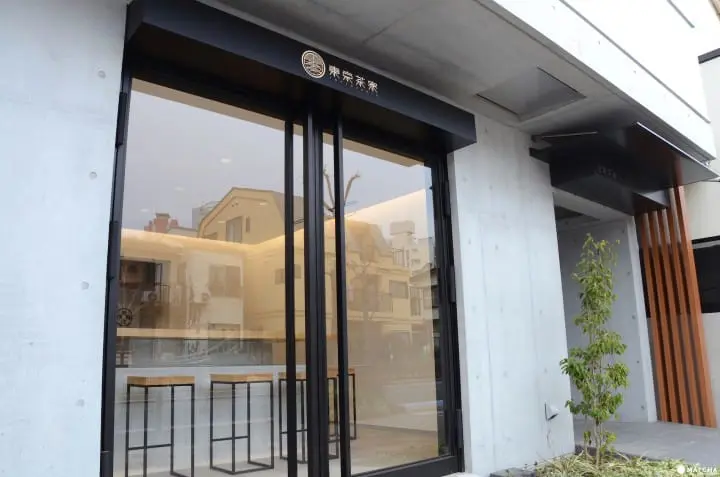Sip Hand-Drip Japanese Tea At Tokyo Saryo!

How familiar are you with Japan's deep-rooted tea culture? We'll introduce a green tea cafe in Tokyo where customers can savor hand-drip beverages alongside traditional Japanese delicacies.
Tokyo Saryo: Deepen Your Knowledge of Japanese Tea

In January 2017, a special cafe came onto the scene in Sangenjaya, Tokyo to introduce Japanese tea culture in a casual, interesting setting. Tokyo Saryo has continued serving customers hand-drip Japanese tea alongside wagashi (traditional Japanese sweets).
The cafe is a seven-minute walk from Sangenjaya Station along the Tokyu Den-en-toshi Line. From the station's South Exit B, head south down a busy road (Route 246), then turn left at the intersection in front of Setagaya Police Station. You'll find Tokyo Saryo in the heart of this quiet neighborhood.
The creative director of Tokyo Saryo, Mikito Tanimoto, revealed the main reason behind choosing this location. He stated, “[Sangenjaya] is where one can feel the rhythm of everyday life within a refined atmosphere.” Tanimoto also confessed to feeling a special connection when learning about three respected teahouses in the same area during the Edo Period.

In addition to selecting high-quality tea, Tanimoto added that they pay attention to tea paraphernalia and the cafe's decor. The white-washed interior will make you feel at ease, while the tea tools and furniture add a touch of sophistication.
To immerse customers in the art of tea drinking, there are only a total of nine seats. Since the cafe is crowded on weekends, it's advised to make a reservation beforehand. Visit the reservation page on the official website to secure a seat.
Appreciate the Nuances of Tea With Wagashi

The menu is also why this this cafe is exceptional! There's only one option on the menu: a set of two types of sencha green tea and a dessert (1,400 yen including tax). The variety of tea you select is not only categorized by the place of origin and quality. It is also characterized by its sweetness, bitterness, and umami-rich flavor.
You can choose two of seven domestic tea varieties from different regions in Japan. Dessert-wise, there are three types of wagashi: hojicha blancmange, dried fruit yokan, and ohagi (*1).
*1 Ohagi: glutinous rice covered with red bean paste and other toppings.

While we wanted to taste all seven tea varieties, we picked Koushun, a tea hailing from Shizuoka Prefecture, and Kouran, a brand from Kagoshima Prefecture.
After selecting your tea, the artisanal display of tea preparation begins! We watched in awe as our host created our hand-poured brew across the counter.

The water temperature must be 70 degrees Celsius when making the first brew (*2) to bring forth the tea's aroma. According to Mr. Tanimoto, Koushun has "an elegant and fresh, cinnamon-like aroma.” Kouran is reminiscent of “kinako (*3), but on the second gulp, you'll be surprised by its aonori (green laver seaweed) flavor twist”.
That's the impression we had, too! Following our comparison of the two tea brands, we agree that they have different taste profiles.
*2 First brew: this refers to the first prepared cup of tea. The second and third cups are made with the same leaves.
*3 Kinako: roasted soybean flour.

The "Kaoru Ohagi" rice dumplings served alongside the tea set.
The "Kaoru Ohagi" is a bite-sized dessert delicately shaped into an octagon. Just a single mouthful will fill your palette with exquisite flavors. The white ohagi is a mini masterpiece bursting with apple aroma. It is a beautiful refreshment with your cup of sencha tea.

After you’ve finished the first brew, the host will brew a second cup using hot water at 80 degrees Celsius. This time, you will be able to grasp the subtle differences between the tea brands more clearly.

Finally, you can enjoy a cup of genmaicha (*4), which is meant to soothe and bring comfort with its savory aroma.
*4 Genmaicha: roasted brown rice tea.
Bring Home Sencha Tea as a Souvenir!

As the cafe has garnered national attention, it simultaneously has attracted customers from around the globe!
They also sell Japanese tea, so you can purchase your favorite brew to enjoy at home. While prices vary according to brand, a 50-gram package starts from around 1,080 yen.

According to Mr. Tanimoto, people should enjoy their cup of Japanese tea as part of their lifestyle—without any strain or stress. In other words, let's also continue to delight in our discovery of sencha tea in the comfort of our own homes!
1988年東京生まれ・在住。 慶應義塾大学文学部東洋史学科卒業後、2012年朝日新聞社に入社。 新聞記者として新潟、青森、京都を転々とし、2016年11月からフリーで活動を始める。 旅、演劇、本などが主な守備範囲のフリーライター、フリーランサー。





































![[For beginners and debutants] Special feature on recommended ski resorts and ski tours!](https://resources.matcha-jp.com/resize/720x2000/2025/12/26-254120.webp)



